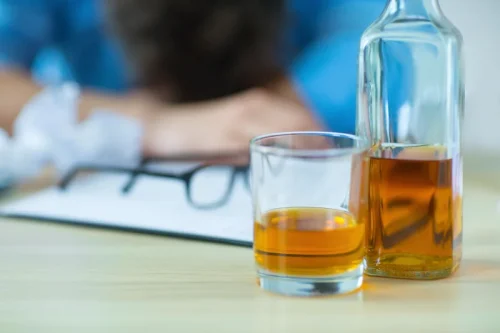Alcohol and diabetes: Effects, blood sugar levels, and guidelines

Finally, the priming effect in humans appears specific to glucose as it does not impair glucagon-mediated insulin secretion 93. Likewise, there was no change in glucose tolerance in chronic alcohol-fed rats 89,90,91 or mice 92. The effect of alcohol on glucose tolerance in nondiabetic subjects and animals is often contradictory making data interpretation problematic. In general, glucose tolerance has been reported to impaired, improved and unaffected by alcohol, as described below. These discordant findings highlight the equivocal nature of the data obtained from standard glucose tolerance tests (GTTs), especially when concomitant insulin concentrations over time are diabetes and alcohol blackouts not also provided. In particular, while GTTs appear to primarily reflect peripheral insulin sensitivity, they also contain a component of noninsulin-mediated glucose disposal or glucose effectiveness.
Impact of Alcohol on Insulin Action

You may want to talk to your doctor to see if drinking alcohol is safe for you and get guidelines based on your specific health concerns. Despite the potential health perks of drinking alcohol, there are some cautions as well. When drinking alcohol is combined with the medications most often used to treat diabetes—particularly insulin and sulfonylureas, low blood glucose can result. While a glass of wine with dinner probably isn’t a big deal, a mojito on an empty stomach at happy hour is.
What should I do if I drink, or think I am going to drink, more than is recommended?
Among other cell types, the Islets of Langerhans include an inner core of insulin-producing beta cells surrounded by a layer of glucagon-producing alpha cells. Drinking alcohol can reduce your liver’s ability to regulate the release of carbohydrates into your bloodstream. When this happens, your blood sugar can drop too low, which is known as hypoglycemia. On the other hand, if you have lots of food and then drink too much, your blood sugar can get too high. They can tell you if alcohol might interfere with your medications or cause other health issues. Alcohol can cause flushing, nausea, increased heart rate, and slurred speech.
- Always read your medication labels and consult with your healthcare provider.
- But, importantly, many people found to have type 2 diabetes have no symptoms, so it is important to get checked by asking at your GP surgery.
- If you have concerns about your health, are worried you might be diabetic or want advice relating to a diabetes diagnosis then you should contact your GP surgery.
- Females showed a stepwise increase in healthcare costs with increasing drinking frequency, peaking at 31.8% higher costs for daily drinkers.
- People with type 2 continue to produce insulin in early disease stages; however, their bodies do not respond adequately to the hormone (i.e., the patients are resistant to insulin’s effects).
- Acute in vitro treatment with alcohol or its metabolite, acetaldehyde, also dose-dependently reduces GSIS in isolated islets 103.
Sleep patterns in older women
Factors such as lifestyle, living and work environments, complications, and treatment plans all play a role in how someone manages their condition. Further, the consumption of alcohol is individualized and might affect each person differently. That’s true for all drinkers — but it’s especially true if you have diabetes. A standard drink contains 12 grams (approximately 0.5 ounce) of pure alcohol. This amount is equal to one 12-ounce bottle of beer or wine cooler, one 5-ounce glass of wine, or 1.5 ounces of distilled spirits.

How does alcohol affect the liver’s ability to regulate blood glucose?
This can make it difficult to tell if you’ve had too much to drink or if your blood sugar is dropping to dangerously low levels. Take a look at the numbers and you’ll find that only moderate drinkers have less cardiovascular disease. Those on the opposite ends of the spectrum—people that drink heavily and those that don’t—have a greater risk. This is because the liver has to work to remove the alcohol from the blood instead of managing blood sugar levels. Alcohol consumption can also lead to situational unawareness of low blood sugar levels.

Effects of Alcohol Consumption in the Fed State
- Overweight status showed contrasting effects between sexes, with a 3.4% decrease in healthcare costs for males but a 7.6% increase for females.
- Over time, excessive alcohol consumption can reduce the overall effectiveness of insulin.
- Drinking alcohol can reduce your liver’s ability to regulate the release of carbohydrates into your bloodstream.
- Those findings suggest that alcohol consumption, particularly moderate consumption, may have a protective effect against cardiovascular disease.
- The study recruited 733 community-dwelling women from the Study of Osteoporotic Fractures (SOF), all of whom were aged at least 65, could walk without assistance and had not had two hip replacements.
Addressing alcohol addiction is a significant step towards reducing diabetes risk and promoting overall health. At Zinnia Health, we extend a supportive hand to individuals grappling with alcohol addiction, offering a pathway toward a healthier lifestyle. It acts by inducing an unpleasant physical response (e.g., nausea and vomiting) after alcohol consumption. Many impotent diabetic men also have lower than normal levels of the sex hormone testosterone in their blood. Alcohol reduces blood levels of testosterone and may thereby further exacerbate the existing hormonal deficit.
- The best would be low-calorie and/or low-carb alcoholic drinks such as light beer and spirits like whisky and vodka.
- For example, neither a single oral dose of alcohol 93 nor a 4 h intravenous infusion altered plasma insulin concentrations determined 12 h later.
- The liver plays a critical role in glucose metabolism, and liver damage can disrupt this process, contributing to the development of diabetes.
Types of Diabetes
The carbohydrate content in beer varies by brand, while most wines and spirits are low in carbohydrates. Taking the step towards managing alcohol addiction not only paves the way for reduced diabetes risk but also fosters a foundation for healthier living. Reach out to Zinnia Health today, and embrace the support and resources available to navigate through the complexities of alcohol addiction and diabetes management. Taking control of one’s lifestyle is a foundational step in preventing and potentially reversing alcohol-induced diabetes.

As a result of the immune system’s attack, the beta cells can no longer produce insulin. Because insulin is a key metabolic hormone, insulin deficiency leads to major impairment of the body’s regulation of carbohydrate, lipid, and protein metabolism. The subtractive approach calculates the additional costs incurred by individuals with risk factors by subtracting the costs of those without such factors. The latter may undergo logarithmic transformation to address distributional considerations 10, 11. After adjusting for confounders using econometric models or propensity score matching (PSM), the marginal costs for each risk factor are estimated 12, 13.
- Acute alcohol intoxication also produces whole-body insulin resistance in rats 12,116 and the alcohol effect appears to be dose-dependent 117,118,119.
- Once a person consumes it, it is rapidly absorbed by the stomach and small intestine and enters the bloodstream.
- Metformin, a common diabetes medication, can also interact with alcohol and increase the risk of lactic acidosis, a serious condition.
- In contrast, gluconeogenesis from pyruvate is unaltered or even elevated by acute alcohol 38,39.
- The relationship of alcohol consumption to cardiovascular disease in diabetic people has not been well evaluated.
And, in the UK, people of south Asian, African-Caribbean, or black African descent are two to four times more likely to develop type 2 diabetes, compared with white people. The study described above examined how much alcohol consumption might be too much. Light drinkers (those consuming one to three drinks per week) had the lowest rates of cancer or death compared to those drinking less than 1 drink per week. Cardiovascular disease—alcohol use raises blood pressure, increasing the risk of cardiovascular disease, which is the main cause of death in people with type 2 diabetes. The fasting state, or the state in which all food has been digested and stored, can lead to instances of low blood sugar, known as hypoglycemia. Substance abuse This effect can be seen in people with and without diabetes after drinking alcohol on an empty stomach.
Health Conditions
The outcome variable was the total cumulative healthcare costs from 2010 to 2019, which was calculated by adjusting each annual cost using the price index for the respective year and then summing these adjusted costs. This approach was designed to assess the mid–to long–term impacts of health risk factors from 2002–2004. Healthcare costs included the sum of the Korean National Health Insurance (NHI) benefit and the copayment for NHI-covered items, excluding out-of-pocket payments for non-covered services. The adjustment was made using the medical price index (NHI fee schedule), with the 2015 index set at 100. Additionally, costs were converted from Korean Won to USD using the 2015 exchange rate.
